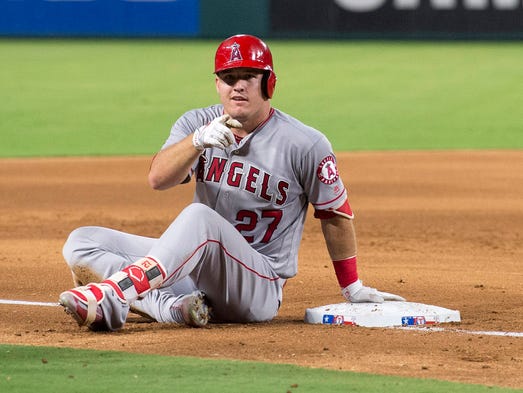Groundwork for a fantasy baseball title begins now – USA Today – USA TODAY
Welcome to a new season of fantasy baseball, where hope springs eternal, especially after the Chicago Cubs finally won a World Series title.
Of course, the seeds of the Cubs’ long-awaited championship were planted long before the first pitch of the season. Or even the first pitch of spring training.
Fantasy owners who hope to win their leagues also need to get an early start. That’s where we come in. As players are honing their skills this spring, fantasy owners should be familiarizing themselves with the player pool and planning their draft strategies.
So where to start? Let’s first see if there’s anything from last season we need to incorporate into our preparations for 2017.
The game is changing
Last year at this time we believed the game was ruled by the kings of the hill.
With strikeout rates rising steadily and scoring trending downward, dominant pitching was a must for any winning fantasy team. Aces flew off the board in the early rounds of drafts, while owners had to scramble for every last run and stolen base.
What we discovered was that pitchers were still just as dominant — the number of strikeouts per game increased for the 11th consecutive season — but hitters rediscovered a way to even the playing field.
In 2016, the rate of home runs (1.16 per game) rocketed to a level almost unprecedented in baseball history. Teams weren’t necessarily scoring more runs, but they were doing it much more often by way of the big fly.
An amazing 111 batters hit at least 20 home runs last season. Everyone was leaving the yard, from the smallest player in the game (5-6, 165-pound Jose Altuve) to a rookie who was only called up in August (Gary Sanchez). Fantasy owners even found 30-homer guys off the waiver wire (Brad Miller, Jedd Gyorko).
With home runs so prevalent, major league teams showed us this offseason that one-dimensional sluggers aren’t so valuable anymore. Just look at the trouble free agents Chris Carter, Mark Trumbo, Mike Napoli, Jose Bautista and Pedro Alvarez had finding a home.
Fantasy owners already seem to be taking the same approach in drafts this season. Players in the early rounds not only have to hit for power, they need to contribute in other areas as well.
On the other hand, there’s the ever-present need for speed. In contrast to the wealth of home run hitters, just 28 players had more than 20 stolen bases last year. (And of those 28, half of them stole at least 30 bags.)
Just look at where the elite speed guys went in the League of Alternative Baseball Reality (LABR) Mixed draft. Last season’s steals leader, Jonathan Villar with 62, was taken 16th overall. Starling Marte, who finished third with 47, went five picks later. Even punchless Billy Hamilton (57 steals) was selected early in Round 4.
The takeaway: Players who have power and speed are going to be more valuable than ever because they reduce the reliance on the single-category players who can hurt you in areas where they’re weak.
The landscape is changing
Also at this time last year, a dividing line had developed between the haves and the have-nots. It seemed pretty clear which teams had the rosters to be playoff contenders and which ones were obviously building for the future.
Fantasy owners could take advantage by streaming pitchers and stacking their weekly lineups in games against the weaker teams, especially the bottom feeders in the National League.
But after a season of taking their lumps, several of those downtrodden franchises are showing signs of life. And they’re making room for their top young players to get regular at-bats.
One example is the Cincinnati Reds, who finally traded second baseman Brandon Phillips to give speedy infield prospect Jose Peraza a chance to play every day. Peraza was one of those 20-steal guys last season, and he did it in just 72 major league games.
The same thing can be said of the San Diego Padres, who seem to be making room for top outfield prospects Hunter Renfroe and Manuel Margot. Or of the Philadelphia Phillies with young pitchers Aaron Nola, Vince Velasquez and Jerad Eickhoff.
If major league teams aren’t afraid to throw their young players directly into the fire, fantasy owners shouldn’t be either.






















































